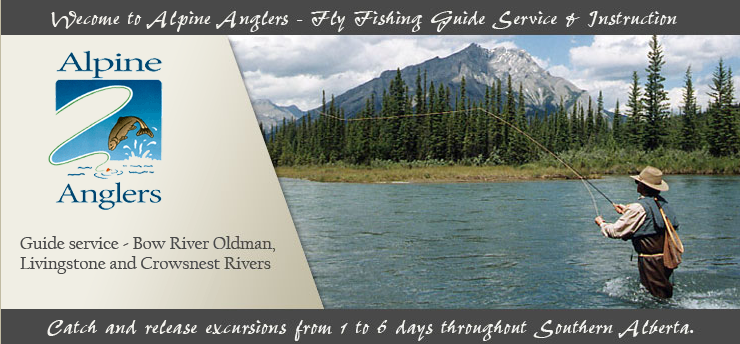FISHING NYMPHS
Fly fishing using nymph imitations is, at least in my opinion, the most productive method available to today’s river anglers – and pretty darn effective in still waters too.
It has been estimated that 80 to 90% of a fish’s feeding activity occurs near the bottom of a lake or river. This, surely, has significance to an angler. It is, therefore, worth looking into the flies and methods of fishing utilized to get down to where the fish are most actively feeding.
The predominant food items of fish are mayfly, caddis fly, and stonefly nymphs. There are too many specie of each to go into a lot of detail here, suffice it to say that they are an extremely important food source. These live among the bottom weeds and rocks, for up to four years in the case of some stoneflies, and are readily available food items throughout the year.
Most of these are poor swimmers and, when dislodged from their normal habitats at the river bottom, drift freely with the current, hoping to find something to grab onto and return to their preferred habitat. It is at this time that they are available to the trout.
Different specie have different hatching methods. Some swim to the surface, some float to the surface to emerge into flying adults, and some creep along the bottom to the rivers edge to crawl onto shoreline vegetation to emerge. It is during this migration, and the emergence stage, that nymphs are most vulnerable to trout, and they feed voraciously on them from the time they leave the bottom structure until they have completed the emergence and flown away.
Some of the flies used to represent mayflies and caddis flies are: gold ribbed hare’s ear, 52 buick, squirrel tail, prince, and pheasant tail to name just a few. There are also a legion of flies that represent the various stonefly varieties.
Probably the best way to fish most nymph patterns is with a floating line, a fairly long leader and a strike indicator.
Strike indicators come in many forms and most work quite well. The key is to have one large enough to stay afloat with the weight of the fly, yet not so large as to cause troubles casting or in controlling the drift. For small flies a 2” piece of brightly coloured yarn that has been sparingly treated with fly floatant works quite well. Larger and heavier flies need a more buoyant indicator. I use a ‘loop-to-loop’ connection system for my leaders, so the yarn is very easily trapped between the two loops, and passes easily through the tip top guide when using a very long leader (longer than your rod- 12 or 15 feet).
The fly should have enough weight to travel right at the bottom, with an occasional tick as the fly hits a rock being transmitted up the line and through the rod to your hand, and you should occasionally catch bottom. If you don’t, you’re not deep enough.
Depth is controlled by the weight of the fly and additional weight added to the leader in combination with leader length, and the distance between fly and indicator. Depending on current speed this distance is usually something about 1 ½ to 2 times the depth of the water being fished, necessitating frequent adjustments for different pools, runs, and riffles.
Cast from directly upstream to about 45o up and across. As the fly and line approach, begin lifting the rod tip, and arm if required, until it is straight up and there is very little line remaining on the water. At this point, the fly should be about even with you. As the line travels downstream, below you, lower the rod tip until it is touching the water, keeping pace with the movement of the fly. Allowing the fly to be pulled from the bottom by the current, thus imitating an emerging nymph, often triggers a strike. Whenever there is the slightest pause or change in momentum of the indicator set the hook- it may well be a fish.
This can be a very tiring method as there is a lot of shoulder movement and holding of the hand in the air, but it is well worth the effort.
There are thousands of mayfly and stonefly genera, but it is not important to know them all, nor is it important to know their full scientific name. When you get to a piece of water, take a few minutes to pick up a few rocks and check out the nymphs that are clinging to them.
The nymph you see in highest numbers would be a good pattern to begin with. Imitations should be about the same size, and colouration, although it is usually safe to go a bit bigger. If you carry mayfly nymphs in brown, tan, and gray in sizes ranging from 10 to 18 you are well prepared. Stoneflies in black and golden brown in sizes 4 to 10 are common.
If you have never tried nymphing you are missing out on some good action. It is not as visually exciting as dry fly fishing, but it can sure be a lot more productive. Remember that the emergant adult, or the egg laying female adult are only two very short events in the total life cycle of the insects.
